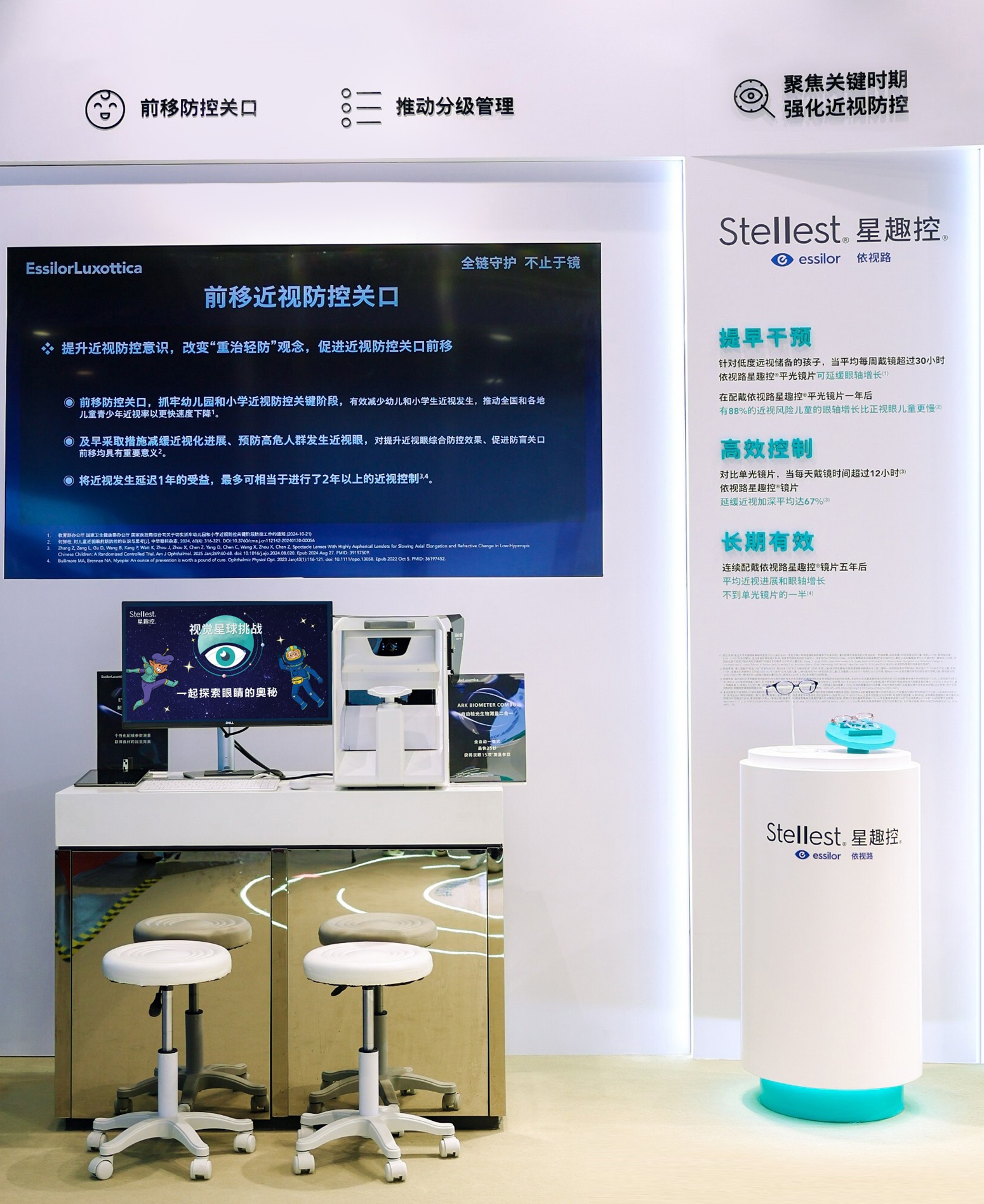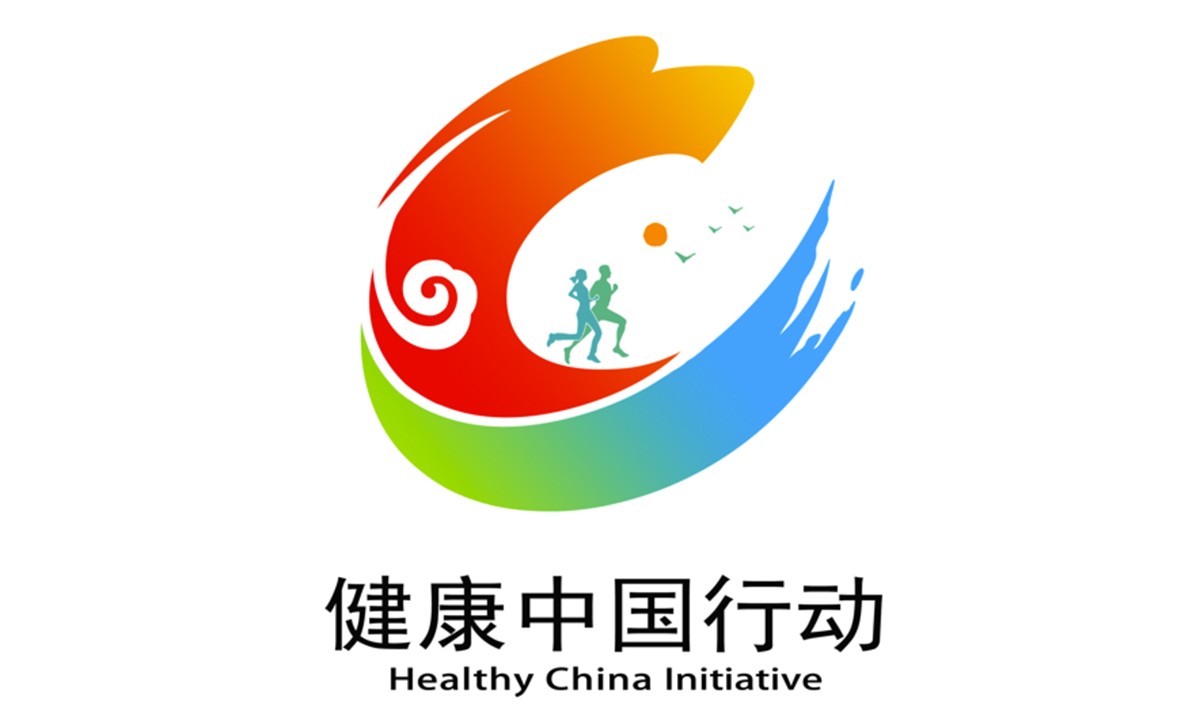医谷编者案:2014年12月19日,《Science》推出了中医药特刊,不过该中医特刊被业内人士指出实为赞助商花钱出版的广告宣传小册子,具体情况如何,医谷受限于资源无从考证,不过就像《第一财经周刊》经常也会在杂志中夹带一份小册子,虽然也有广告的成分,但仁者见仁,智者见智,其中文章也不乏参考学习价值。另外从广告传播的角度而言,广告也是为了传递信息,传递价值,即使是广告,但从宣传中医药的角度而言,未尝不可!现转发一篇中医特刊中刊登北京中医药大学校长的文章:《Zheng: A systems biology approach to diagnosis and treatments》,
“证”—— 疾病诊疗的系统生物学方法
传统中医学是一种古老的医疗实践体系。它强调人体自身的统一性和人与自然环境的统一性。作为中医学的一个重要概念,“证”是人体在特定的内在或外在条件下的生理或病理概括,通常是由中医师将四诊(望、闻、问、切)所收集的资料,包括临床症状和体征,运用中医学理论进行综合分析并概括出来的疾病本质。正确辨证是疾病诊断和治疗的基础。
在西方医学中,疾病是指一种特定的病理状态,影响着人体的局部或整体,并具有特定的症状。相比之下,“证”是中医对疾病的独特定义,涵括了患者所有的症状。由于人体自身内部的高度统一和谐,从分子水平上完全独立地对不同疾病进行研究是十分困难的。证候的研究亦如此。再者,证候是动态变化并可相互兼夹的。有史以来,“证”一直是中医确定治法、处方遣药的重要准则。证候方面的研究缺乏,使得其潜在的生物学原理及证候、疾病和处方药物之间的联系难以被理解。既往有学者尝试将中医辨证与现代生物医学的诊断方法相结合,但其结果并未尽如人意。许多众所周知的经方,如六味地黄丸、金匮肾气丸,已经久为中医师辨证治病所用,但这类以证候为导向的治疗在证候和疗效方面仍缺乏循证医学依据。从分子水平上多尺度地对“证”的生物学基础进行研究,使其在生物学和机械论的角度上难以被理解。因此,我们提出构想,建立一种综合的证候图,以分子细胞学联系为依据,将所有的“证”联结在一起。另外,我们建议创立名为“证候组学”(Zhengome)的组学新领域,以网状结构为基础单位,从分子水平和系统水平来研究人体的层次结构。全面地理解“证候组学”,需要引入大量的证据来源,从基因共享到蛋白质相互作用、环境因素共享、共同的治疗、临床表现,目的是为把握不同证候之间的关系。“证”通过阴阳、表里、寒热、虚实来描述患者的病理状态,从而为处方遣药提供依据。现代组学技术通过系统生物学的方法,结合生物信息学和生物网络模型,已被应用于证候间的差异性研究和寻找新的生物标记物。例如,有研究显示,辨证为“热证”和“寒证”的类风湿性关节炎患者具有基因和代谢组学上的差异——热证患者的细胞凋亡比寒证患者更活跃。再者,有学者通过采用一种以网状结构为基础的计算模型,从神经-内分泌-免疫的角度理解证候的涵义,结果发现寒证和热证与代谢-免疫失衡密切相关。有人对黄疸患者的尿液代谢组学及“阳黄”(急性)与“阴黄”(慢性)两种分型进行研究,并找出几种生物标志物代谢产物。然而,目前大多数研究仅仅依靠一种或两种指纹图谱技术的方法,而缺乏一种能将来自不同组学的数据整合在一起的方法。这些研究没有将分子水平数据的分析与临床变量结合在一起,由此可能失去了产生更具说服力的结论的机遇。鉴于既往研究的局限性,未来我们需致力于对大量不同证型患者的数据进行各类组学水平的综合分析,并需涵盖疾病预后和治疗工具方面的研究。再者,将患者的临床信息和分子水平数据结合在一起,可以为证候的理论解释提供循证依据。证候可以随着疾病的进展而动态变化。在疾病的各个不同阶段进行正确辨证,能为及时调整方药提供有利依据。采用动态的网状结构模型,疾病病程可以被定位为网状结构中的时空变化。动态调整处方治疗后所发生的证候变化可用于辨别动态生物网状结构中的重要因素。正确的网络微扰模型和稳健性及拓扑分析可以揭示疾病进展或演变潜在的相关基因和治疗靶点。在建立模型和模型的过程中,需将疾病在特定证候中不同方面的表现(例如主症和并发症)、心理因素、社会因素和环境因素之间的关系考虑在内,旨在揭示复杂疾病的动态属性。“证候组学”与动态模型的结合,对建立精准量化的证候研究模型、创立新的疾病研究系统有着潜在意义。
尽管基因组学、转录组学、蛋白质组学和代谢组学已取得较大进展,合理的药物设计和新药研发仍经常遭遇失败,耗费巨大,阻碍着现代药物的研发。
纵观中医药发展史,在传统药物的研发中,以证候为导向的药物研发取得了巨大的成就。但是这对于西方医学来说是一种全新的模式。因此,如何将以证候为导向的药物研发融入到现代药物研发的潮流中,将是一大难题。在此,我们提出在系统药理学框架中建立“从证到中医”和“从中医到证”的策略,旨在研究生物系统和开发新型的治疗方法。 “从证到中医”为从证候的诊断到中药处方之间提供了渠道,包括证候的辨别、证候和相关的基因、蛋白及药效反向定位的识别、网状结构系统的构建与分析和最终找出有效的中药疗法。实际上,这样的策略可作为一种反向定位和筛选的途径,从适用于多种证型及相关疾病的天然药物中寻找并研发新药,目的是为了帮助研究者找出药用植物、多成分中药处方或复方合剂的活性成分。而这种新策略已经成功应用于我们的一个研究中。我们在补益气血的中药中找到其有效成分、靶点及在治疗气血不足证中的作用途径。“从中医到证”是指从中药或中药复方到证候辨别的整个系统评估的过程,包括中药的采集与分类,药物吸收、分布、代谢、排泄和具有毒性的成分,药物靶向的检查和组织定位,构建和分析网状结构系统,最终辨别证候/疾病。这种策略可能有助于在天然药物中找出新型的多靶点药物。举个非常显著的例子,就是冠心病气虚血瘀证和相应辨证用药的系统分析,结果提示该类用药中的活血药具有扩张血管、改善循环、降低血液粘度、调节血脂的作用,而补气药具有促进能量代谢和抗炎的疗效。“从中医到证”的策略有助于阐释中药及其复方的药理学作用。在我们正在开展的“脾虚证”研究中,我们采用SAPAS、RNA测序、脂类代谢组学、蛋白质代谢组学和转录组学的方法对患者提供的标本进行分析,以解释脾虚证的发病机制和人体复杂反应。
我们准备根据“从中医到证”的策略,从药物研发的角度,系统地研究广泛用于治疗脾虚证的四君子汤,目的在于探讨此方为何能够调节免疫反应、促进血液循环和改善胃肠道功能。
尽管以证候为导向的药物研发已经取得一定进展,但其未来的发展仍需要多学科技术的结合和创新。这将促进对疾病的多因素理解和新型疗法的发展。
(译/林玮涛 后记:粗略翻译的一篇文章,供大家参考学习。学识尚浅,对于文中的不足之处,敬请各位老师、同学、专业人士批评指正!谢谢!)
附录1原文
Zheng: A systems biologyapproach to diagnosis and treatments
TraditionalChinese medicine (TCM) is an ancient medical practice system which emphasizesregulating the integrity of the human body and its interrelationship withnatural environments. As a key concept in TCM, Zheng (meaning syndrome orpattern)is the overall physiological and/or pathological pattern of the humanbody in response to a given internal and external condition, which usually isan abstraction of internal disharmony defined by a comprehensive analysis ofthe clinical symptoms and signs gathered by a practitioner using inspection,auscultation, olfaction, interrogation, and palpation of the pulses (1).Correctly identifying the Zheng is fundamental for the diagnosis and treatmentof diseases.to systems level is important for advancing the identificationandtreatment of these syndromes, and for providing more objective and quantitativediagnostic criteria.
In Western medicine, a disease is a particular abnormal and pathological conditionthat affects part or all of the human body and is often construed as a medicalcondition associated with specific symptoms. By contrast, Zheng puts forth avery different definition of a disease and encompasses all of the symptoms apatient presents.Becauseof the highly interconnected nature of the human interactome, it is difficultto study different diseases at the molecular level completely independent ofone another (3), and this issue also applies to Zhengs. Moreover, Zhengs aredynamic with changing boundaries, overlapping symptoms,Moreover, Zheng has beenhistorically applied as the key pathological principle guiding the prescriptionof herbal formulas (Figure 1).
A lackof research on Zheng has left us with little understanding of its underlyingbiology or the relationships between different Zhengs, diseases, and drugs.Moreover, there have been attempts to integrate Zheng differentiation withmodern biomedical diagnostic methods, though these efforts have not achievedthe desired results (2). Many well-known herbal recipes, such as Liu Wei DiHuang Wan and Jin Kui Shen Qi Wan, have long been used for the clinicaltreatment of Zheng disorders; however, Zheng-guided treatments are still scarcedue to the lack of evidence-based interpretations of syndromes and treatmentefficacies. Thus, investigating the biological basis of Zhengs from a molecularand a multiscale nature, which makes them difficult to understand at abiological and mechanistic level. Thus, we propose that a comprehensive Zhengmap be constructed that links together all the Zhengs based on their molecularand cellular relationships. Further, we suggest creating the “Zhengome” as a new 'omics field, in which a networkis the basic research unit used to investigate the hierarchy present in thehuman body,from the molecular to the systems level. Acomprehensiveunderstanding of the Zhengome requires us to bring togethermultiple sources of evidence, from shared genes to proteinprotein interactions,shared environmental factors, common treatments, and phenotypic and clinicalmanifestations, in order to capture the relationships between the differentZhengs.
Zheng uses the Yin-Yang, exterior-interior, cold-heat, and deficiency-excessdefinitions to describe patients’ conditions, which are then managed byZheng-specific recipes (Figure 1). Modern 'omics techniques combined withbioinformatics and bionetwork models through a systems biology approach havebeen applied to investigate the differences between Zhengs and to identifynovel biomarkers. For instance, rheumatoid arthritis (RA) patients differentiatedon the basis of “hot” and “cold” Zhengs have been shown to be associatedwith different underlying genomic and metabolomic profiles, with the RA hotgroup showing more apoptotic activity than the cold group (4). Additionally, Liet al. used a network-based computational model to understand Zheng in thecontext of the neuro-endocrine-immune network and found that cold and hotZhengs were closely related to a metabolism-immune imbalance (5). Wang andcolleagues investigated the urine metabolome of patients with jaundice syndromeand its two subtypes of Yang Huang (acute) and Yin Huang (chronic), andidentified several biomarker metabolites (6). However, most of the currentstudies have relied on only one or two approaches for molecular profiling and havelacked an efficient method to integrate data obtained at different 'omiclevels. These studies also did not look at combining the analysis of moleculardata with clinical variables, possibly missing an opportunity to generate moreconvincing conclusions. Considering the limitations of past studies, futureefforts should integrate an analysis for all levels of 'omics (e.g., genomics,transcriptomics, epigenomics, and proteomics) data from a large number ofpatient samples for different Zhengs and include an investigation of theprognostic and therapeutic utilities of the data as a whole. Moreover,combining these molecular data with patients’clinical information could provideevidence-based theoretical interpretations for Zhengs and enable an assessmentof Zheng-based therapeutic approaches.
Zhengs may change dynamically during disease progression. Differentiating the specificZheng involved in each stage of a disease could provide valuable guidance forprescribing a dynamic therapeutic recipe. Using dynamic network modeling, adisease process can be conceptualized as spatio-temporal changes in networkstructures. The changes associated with a Zheng under dynamic therapy can beused to identify the key factors in the dynamic biological networks. Appropriatenetwork perturbation models and subsequent robustness and topology analysiscould help unveil potential disease-related genes or therapeutic targetsinvolved in a disease’s progression or evolution (7). Therelationships between the different aspects of a disease (e.g., main symptomsversus complications) in a specific Zheng as well as the psychological, social,and even environmental factors should be taken into account during the modelingand simulation process in order to uncover the dynamic nature of complexdiseases.Combining a Zhengome approach with dynamic modeling has the potentialfor establishing an accurate and quantitative Zheng research model, as well asfor creating a new system for performing disease research.
Despite considerable progress in genome, transcriptome,proteome, and metabolome-basedhigh throughput screening methods and in rational drug design, drug discoveryoften encounters considerable costly failures that challenge the fidelity ofthe modern drug discovery system. Zheng-driven drug discovery has showntremendous success for traditional drug discovery throughout Chinese medicine’s history. However, since this concept iscompletely new to Western medicine, it is no easy task to incorporateZheng-driven drug discovery into modern drug discovery workflows. Here, wepropose the “Zheng to TCM” and “TCM to Zheng” strategies within the framework of systemspharmacology to investigate biological systems and develop new therapeutics(Figure 2). The first strategy, Zheng to TCM, proposes developing a pipelinefrom Zheng diagnoses to TCM drugs,including differentiating Zhengs, identifyingZheng-related diseases and the associated genes and proteins, reverse targetingof drug effects, constructing and analyzing network/systems, and finally identifyingeffective herbal medicines (8). In effect, this strategy can be considered areverse targeting and screening approach that is designed to uncover drugs fromnatural products that can target multiple Zhengs or related diseases. The goalof this method is to help researchers identify the active components withinmedicinal plants and multi-ingredient synergistic herbal formulas or drugcombinations (9). In fact, this novel strategy has already been successfullyapplied in a qi-blood study, where we identified the active compounds in theqi-enriching and blood-tonifying herbs, their targets, and the correspondingpathways involved in the treatment of qi and blood deficiency syndromes (8).The second strategy, TCM to Zheng, consists of a wholesystem evaluation processstarting with herbs or herbal formulas and culminating in identifying theZhengs. This process includes the initial collection and classification ofherbal medicines; screening the ingredients for absorption, distribution,metabolism, excretion, and toxicity (ADME/T); performing targeted drugscreenings and tissue localization; constructing and analyzing networks; andfinally identifying Zhengs/diseases (10). Using this strategy, it is possibleto identify novel multitarget drugs in natural products (11). One particularlystriking example is the systematic analysis of blood stasis and qi deficiencysyndrome in coronary heart disease and the herbal drugs used to treat thesyndromes.The results indicate that the herbs for eliminating blood stasis havepharmacological activity that acts to dilate blood vessel, improve themicrocirculation, reduce blood viscosity, and regulate blood lipid, whileqi-enhancing herbs have the potential for enhancing energy metabolism andantiinflammatory activity (12). The TCM to Zheng strategy can also help toelucidate the pharmacological effectiveness of herbs and formulas.
In ourongoing work investigating Pi-deficiency syndrome(PDS) in the context of Zheng,we are analyzing patient samples using the sequencing alternativepolyadenylation sites (SAPAS) method, RNA sequencing (13), lipid metabolomics,proteomics, and transcriptomics in order to decipher the pathogenesis andcomplex responses of the human body to PDS. From a drug developmentperspective, we plan to systematically investigate the Si Jun Zi decoction, awidely used herbal recipe for PDS, within the framework of the “TCM to Zheng” strategy, so as to understand why thisrecipe can regulate the immune response, stimulate blood circulation, andadjust gastrointestinal digestive functions. Despite the progress inZheng-guided drug discovery, its future success requires the integration ofmultidisciplinary technologies, together with further innovations in thesetechnologies, to facilitate the understanding of multifactorial diseases andthe development of new therapies.
References
1. F.Cheung, Nature 480, S82 (2011).
2. A.Lu, M. Jiang, C. Zhang, K. Chan, J. Ethnopharmacol. 141, 549
(2012).
3. A.L. Barabasi, N. Gulbahce, J. Loscalzo, Nat. Rev. Genet. 12, 56
(2011).
4. H.van Wietmarschen et al., J. Clin. Rheumatol. 15, 330 (2009).
5. S.Li et al., IET Syst. Biol. 1, 51 (2007).
6. X.Wang et al., Mol. Cell. Proteomics 11, 370 (2012).
7. P.Csermely, T. Korcsmaros, H. J. M. Kiss, G. London, R. Nussinov,
Pharmacol.Therapeut. 138, 333 (2013).
8. J.Liu et al., Evid. Based Compl. Alt. Med. 2013, 938764 (2013).
9. P.Li et al., J. Ethnopharmacol. 151, 93 (2014).
10. C.Huang et al., Brief. Bioinform. 15, 710 (2014).
11. C.Zheng et al., Mol. Diversity 18, 621 (2014).
12. W.Zhou, Y. Wang, J. Ethnopharmacol. 151, 66 (2014).
13. Y.G. Fu et al., Genome Res. 21, 741 (2011).
附录2关于中医特刊的质疑评论
中医荣登《科学》?自导自演广告秀
文/玉米,转自网易评论
导语:近日,一则“美国《Science》杂志专门为中医出专刊”的消息引发热议,不少人认为这是国际顶尖学术界对中医的认可,但实际上,所谓专刊只是由赞助商花钱出版的广告宣传小册子而已,与专业的学术论文毫无关系。
六十秒读懂专题:Science出的“中医专刊”只是由广告部门刊发的增刊,内容根据赞助商要求定制,没有经过同行评议,与学术期刊Science编辑部完全无关。而发行增刊对杂志来说只是增收的生意,近年来中国各研究机构自掏腰包争相买版面刊发研究成果,明明是付费广告,对内宣传却成了顶级学术期刊的荣誉证明。
“《Science》杂志专门为中医发专刊”实际上是中医药为求认同自掏腰包的广告行为,由《Science》广告部根据北京中医药大学和浸会大学要求出版,与学术正刊毫无关系
“《Science》杂志专门为中医发专刊”的说法让很多人误以为这是国际顶尖学术期刊对中医的主动认可,但实际上这并非学术杂志的专刊,只是一本广告宣传小册子而已。根据《Science》杂志官方页面显示,该增刊的主题是传统医学,本期中医药专题是由北京中医药大学和香港浸会大学共同赞助发行的第一期,后续还会有关于世界各地传统医药的介绍。而此系列被明确标注为定制出版办公室(CUSTOM PUBLISHING OFFICE)受赞助发行的增刊(SUPPLEMENT),内文首尾都有特别声明,称这些经赞助编辑出版的特殊内容并非经过同行评议,也没有经过Science编辑部的审核,也即这本增刊与作为专业学术期刊的《Science》本身毫无关系。
学术期刊发行增刊只是增收的一门生意;2011年《Nature》杂志在日本药企赞助下发行了亚洲传统医学的增刊,却被国内评论称为“国际顶级科学刊物第一次专刊报告中医”
杂志期刊为企业机构发软文广告是常见的营销方式,就算是学术期刊也不例外,《Nature》、《Science》等杂志的广告部都提供商业定制服务。在Nature的广告招商页面上,定制出版被解释为能让客户发表专属内容,包括个人手稿集、会议摘要或者研讨会进展等,但《Science》对同行评议不作要求,而Nature会找人对论文进行评议,因此为了让这些文章顺利通过,还专门成立下属公司,为客户提供内容包装服务,加工修改文章,而发表平台则是旗下50多种nature系列杂志任君挑选。2011年12月,Nature杂志在日本再春馆制药公司和北里大学东方药物研究中心的联合赞助下,出版了亚洲传统医学增刊,内容都是对中国和日本的传统医学发展情况的介绍,而消息传到国内则被称为是“国际顶级科学刊物第一次以专刊的形式报告中医”。
Science近三年发行的18本商业增刊中,中国赞助的就占了一半,除中科院等机构争相买版面刊发研究成果外,连北航成立六十周年也能专门发行校庆增刊
对Science杂志来说,中国算得上是广告大户。根据官网显示,2011年-2014年这三年里发行的18本商业增刊中,由中国大陆方面赞助出版的就占了一半。其中有中国科学院、中国农业科学院等研究机构的专刊广告,也有如国家人因工程重点实验室赞助出版的中国载人航天领域研究成果汇报,还有大学掏钱买版面刊发成果,比如这次跟“中医专刊”同期发行的另一本增刊,就是由天津大学出资赞助制作的中国科研样板展示,主要介绍了该校承担的973计划研究成果。只要稍微跟科学沾边的,Science几乎就来者不拒,连2012年北京航空航天大学六十周年校庆,也能特意花钱让Science发行一期增刊,专门介绍北航的学校情况。
这些在国外杂志上花钱买的门面,到了国内刻意隐瞒其广告实质,自我吹捧成顶级期刊主动颁发的荣誉证明
无论是Nature还是Science,由商业赞助的内容都会在显著位置做标示注明是广告内容。在Science的官方页面上,那些所谓“专刊”都被归为广告产品的目录里,供读者免费获取。但到了国内,不仅商业增刊被包装成“学术专刊”,连杂志内附的页面广告也成了“专题报道”。比如日前Nature发布了《自然出版指数中国2014》增刊,专门介绍了2014年中国的科研论文发表情况,其中有赞助商广告板块,包括中科院旗下两家研究所、南京大学、四川大学、中科大等五家机构的展示,页面注明该部分内容完全由赞助商负责,结果这些自己掏钱登的广告也成了荣誉证明,变成“Nature刊发专文盛赞我校论文成果”。
不过,也有以《柳叶刀》为代表的学术期刊拒绝出版商业增刊,因为经过检验,送交给他们的赞助内容都无法通过同行评议,发表这种内容对医学杂志来说是一种灾难
虽然对杂志来说,根据商业赞助制作定制内容司空见惯,但也有以著名医学杂志《柳叶刀》为代表的学术期刊坚决拒绝出版商业增刊。2010年,《柳叶刀》发表以《危险的增刊》为题的社论,称他们原本就对出版商业内容持否定态度,但在环境驱使下,还是先进行了试验。结果事后证明那些送交到他们手里的赞助论文全部都无法通过同行评议,这对这家极度重视同行评审的医学杂志来说是一种灾难。在明确表示将不再考虑发表商业内容的同时,《柳叶刀》的编辑部也认为像其他医学杂志照常出版内容暧昧的商业内容,仅仅标注“这些内容并未经编辑部同行评议”以撇清关系,依然是种危险的行为。
附录3 北京中医药大学的回应
文/北京青年报记者董鑫刘洋
北青报记者注意到,这份介绍传统医药的专刊刊登在12月19日的《科学》杂志正刊之中,页码标注为S1-S25,除了徐安龙的文章,还有其他作者的7篇文章同时发表。
昨天,徐安龙在接受北青报记者采访时表示,“这篇文章是发表在《科学》杂志S13页的,与‘买广告’完全是两回事。广告页是没有页码的。”此份专刊的编委之一、剑桥大学药理系教授樊台平向北青报记者证实,徐安龙此文是樊台平为这份传统医药专刊而向其约稿,页码标注的“S”代表的是“special issue”,也就是专刊。
北中医是否在《科学》杂志“花钱买版”?
学校给《科学》杂志一定赞助费
因为北京中医药大学赞助这份专刊,专刊内又同时刊有北中医校长徐安龙的文章,徐被质疑“花钱在国际期刊上出版自己文章”。
对于外界传言的“花钱买版”一说,据《科学》杂志国际协作、运营与出版副总监吴若蕾介绍,国际国内所有学术期刊的正刊几乎都会向作者收取版面费,但《科学》杂志作为非营利机构,则不向作者收取版面费,只有在文章有彩图时,会依据印刷厂要求而收取彩图费。专刊本身不向作者收费,《科学》会邀请业内顶尖机构进行赞助,也会有机构主动要求提供赞助。
据北京中医药大学校方解释,对于这份引起争议的传统医学专刊,他们确实接到了美国《科学》杂志的赞助邀请。作为国内中医界的顶尖机构,最终学校决定接受邀请,并提供了一定金额的赞助。“这事儿我其实一开始也拿捏不准,心里一直也很矛盾,但后来通过校长办公会集体决定,一致认为这是一件好事,作为教育部唯一直属的中医类高校,我们认为应该承担起给中医药在国际最好的学术刊物里提供一个学术舞台的责任。”徐安龙表示。
文章是否具有权威性?未经杂志编委会评估但邀请了同行评审
北青报记者注意到,在这份专刊的S1页以及所刊载包括徐安龙文章在内的8篇学术文章首页,均标注“这些内容没有得到期刊编委的评估”,这让众多业内人士质疑此专刊和徐文章的权威性。
对此,徐安龙表示,由于《科学》杂志内部目前还没有专业针对中医领域的专家,无法自行组织评审,因此委托了中医领域专家组成临时专家委员会,对该文章进行了“同行评审”。
据徐安龙介绍,这篇名为《“症”——疾病诊疗的系统生物学方法》的文章,是源于他今年年初在南京参加中医药领域的学术会议时发表的学术研究成果,得到了与会专家的高度关注,同时也吸引了《科学》杂志的注意。按照《科学》杂志的编审流程,编辑确定该文章符合发表要求后,会在团队内部安排一位这一领域专家来负责组成专家评审团进行“同行评审”,并根据专家评审团意见向编辑提供是否发表的意见。
但是,《科学》杂志内部目前还没有中医领域专家,因此委托了来自剑桥大学药理系的樊台平教授担任核心专家的角色。樊台平告诉北青报记者,此次“同行评审”团由六位专家组成,为了保证评审团队的公正性,还特意选择了两位外国专家来一同进行评判。
“事实上我们经过了严格的‘同行评审’流程,按照专家的意见,我对这篇文章反复修改了五稿,包括标题也进行了两次修改。”徐安龙表示,“不是每一个投稿的文章都能刊登,选择了我是因为我正好讲的是传统中医与现代科技整合的主题。也不是每一期都写中医,后面的合作可能会聚焦于其他国家的传统医学。”
吴若蕾告诉北青报记者,这类没有办法做同行评议的文章,是以副刊的形式随正刊一起发行,还是以专刊的形式放在正刊内,可以由编辑团队或者作者自己选择。这份专刊他们选择放在了正刊内,但确实是没有经过《科学》杂志的评议,所以要作出特别标注,以区别于正刊中其他经过评议的论文。
“赞助与发表文章无关”
对话人:吴若蕾美国《科学》杂志国际协作、运营与出版副总监
北青报:有说法认为这本介绍中医药的专刊只是《科学》的一本广告宣传小册子,或者称为“商业增刊”,是《科学》广告部为客户提供的商业定制,发表客户的专属内容。
吴若蕾:首先,《科学》没有所谓的广告部,也没有“商业增刊”这个说法。除了正刊,我们还有定制出版物,包括专刊、副刊、海报、已发论文的集锦,还有网络论坛等。这本确实是介绍传统医学专刊,而且是刊登在12月19日《科学》杂志正刊内的,更不是广告。这本专刊是我们组织了一个专门的编辑团队历时三年编辑而成。没有哪个广告会用三年的时间来编辑完成吧。
北青报:既然是正刊的一部分,为什么会放在《科学》杂志网站的“BOOKLET”(小册子)分类下面提供给读者免费阅读和下载?
吴若蕾:学术杂志有两种获取方式,付费订阅或者是在网上开放获取(open access),免费提供给读者。《科学》的正刊要付费,专刊部分是可以免费阅读的,以便最大限度地扩大影响。我们把专刊、副刊还有其他可以免费阅读的内容都放在了这个分类下面,但这份专刊并不是小册子,在网上看不出来,看到纸质版的杂志就知道它与小册子是完全不一样的东西。
北青报:这份专刊是受北京中医药大学和香港浸会大学商业赞助发行的吗?
吴若蕾:这份传统医学的专刊将分三期刊载,赞助方很多,除了12月19日这一期封面写明的北京中医药大学和香港浸会大学,还有澳门科技大学、中国中医科学院等,这些赞助商在以后两期的专刊封面会有所体现。《科学》是非营利机构,本身没有这么多预算,需要赞助方来承担印刷和发行的费用,这个赞助方可能是主动来找我们的,也有可能是我们自己找的。不过,对于赞助方,我们也有标准,须是相关领域的顶尖或者权威,不是给钱就能行的,这属于公益赞助,不是利益交换,更不是所谓的“商业赞助”。
北青报:正是专刊封面写明由北京中医药大学和香港浸会大学赞助,内页又刊有北中医校长的文章,因此有质疑说是北中医“花钱买版”给自己做宣传。
吴若蕾:北京中医药大学确实有付赞助费用,中医药大学和浸会大学赞助的是这份专刊的出版和发行,不是为了发自己的文章而花钱买版面,目的是为了在国际推广中医药。这份专刊里面徐安龙校长的文章也只有一篇,他的文章能否发表与是否赞助没有关系。
北青报:那什么样的文章能发在专刊?
吴若蕾:不方便发论文或者不以论文形式为载体的内容就可以用专刊或者副刊的形式体现。或者看作者自己的需求,有些就更愿意以专刊或者副刊的形式发表。这些在专刊上的文章不能用评判论文发表的形式来评判,更类似科技推广、宣传。
北青报:与正刊内的论文相比,专刊文章的权威性是否会减弱?
吴若蕾:没有谁的权威性更高一说,也不是只有论文才是科学,科学也包括科技推广、科普宣传等内容。例如中医药,我们之所以在专刊标注未经过同行评议,是因为国际上没有这方面的专家来对论文进行同行评议,西方国家也没有这个学科,但不说明文章没有科学价值。
来源:医谷综合整理
为你推荐
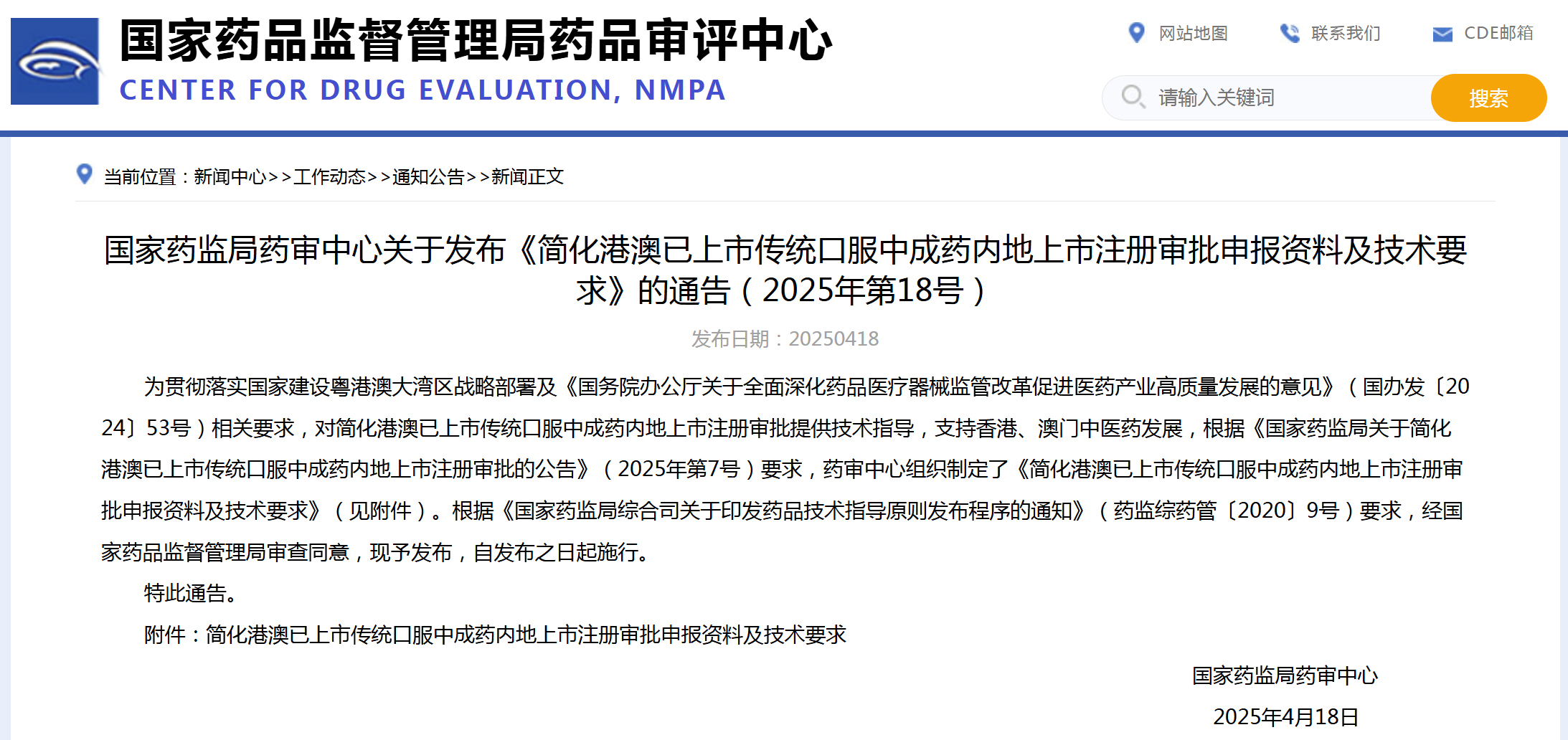 资讯
资讯 CDE:简化港澳已上市传统口服中成药内地上市注册审批申报资料及技术要求
允许香港、澳门特区本地登记的生产企业持有,并经香港、澳门特区药品监督管理部门批准上市且在香港、澳门特区使用15年以上,生产过程符合药品生产质量管理规范(GMP)要求的传统...
2025-04-18 18:54
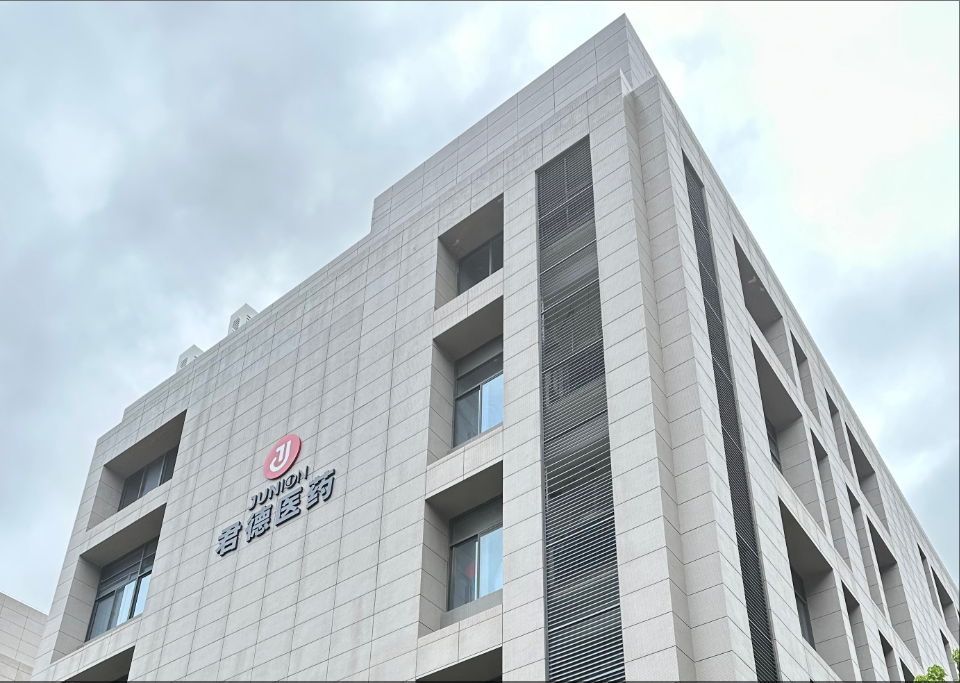 资讯
资讯 君德医药完成近亿元A轮融资,加速推进创新药械组合平台建设与产品上市
本轮融资主要用于首个减重口服器械的注册及生产销售,以及加速多个核心创新药械组合技术平台的产品管线研发进程。
2025-04-18 14:34
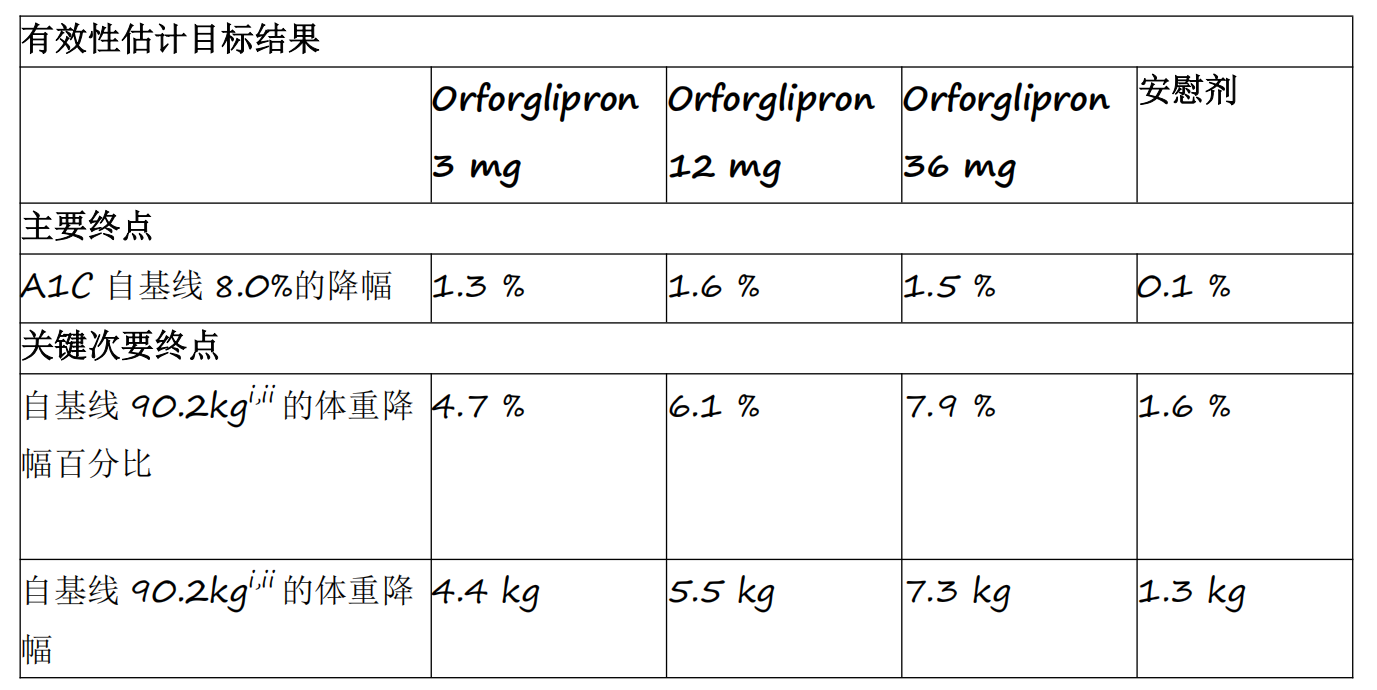 资讯
资讯 礼来首个小分子口服GLP-1RA药物orforglipron 3期临床研究成功
Orforglipron是首个成功完成3期临床研究的小分子GLP-1类药物,各剂量组平均A1C降幅为1 3%至1 6%
2025-04-18 14:12
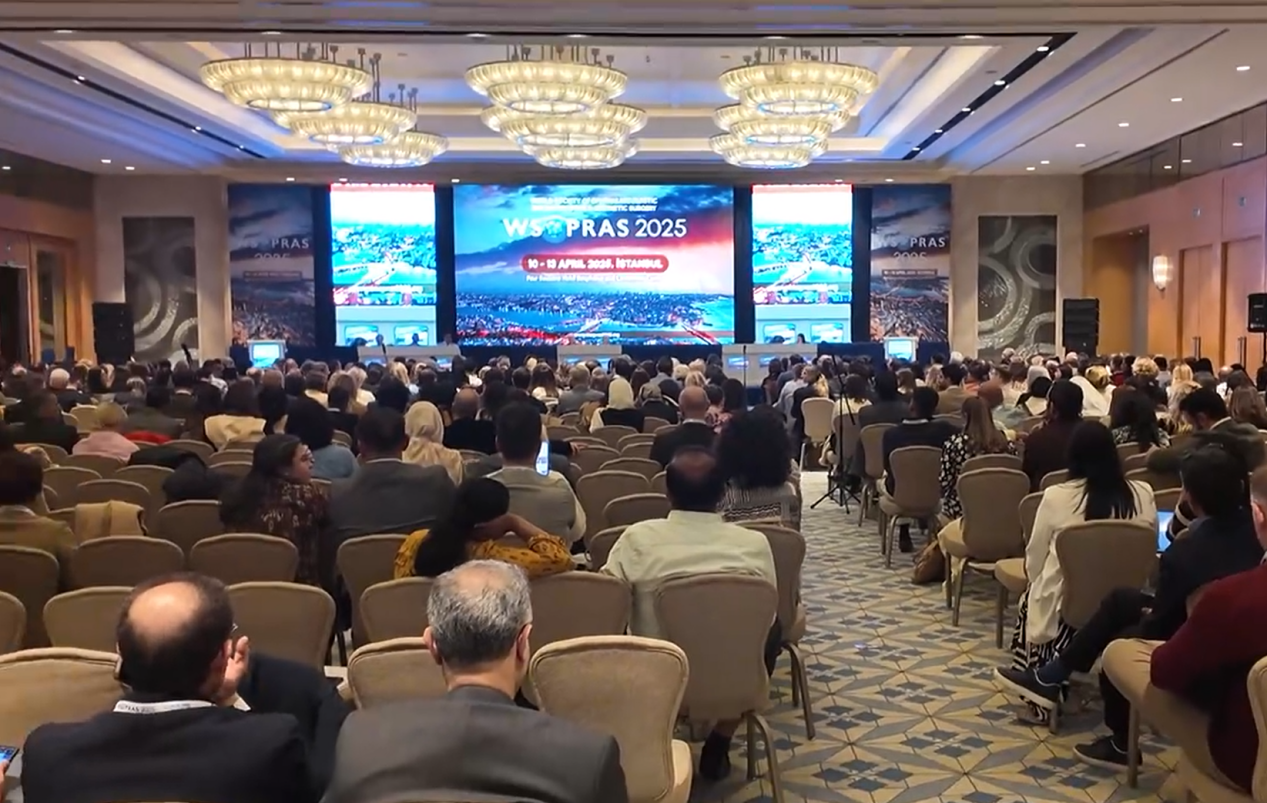 资讯
资讯 WSOPRAS 2025落幕:中国眼整形闪耀国际舞台,李冬梅教授代表爱尔眼科获2027年大会主办权
4月10日至12日,世界眼整形重建外科学会(WSOPRAS)2025年国际峰会在土耳其伊斯坦布尔盛大举行。
文/李林 2025-04-18 09:27
 资讯
资讯 华东医药2024年报出炉,营收超400亿,创新产品密集上市
报告显示,2024年公司合计实现营业收入419 06亿元,同比增长3 16%;实现归母净利润35 12亿元,同比增长23 72%,实现扣非归母净利润33 52亿元,同比增长22 48%。
2025-04-17 21:18
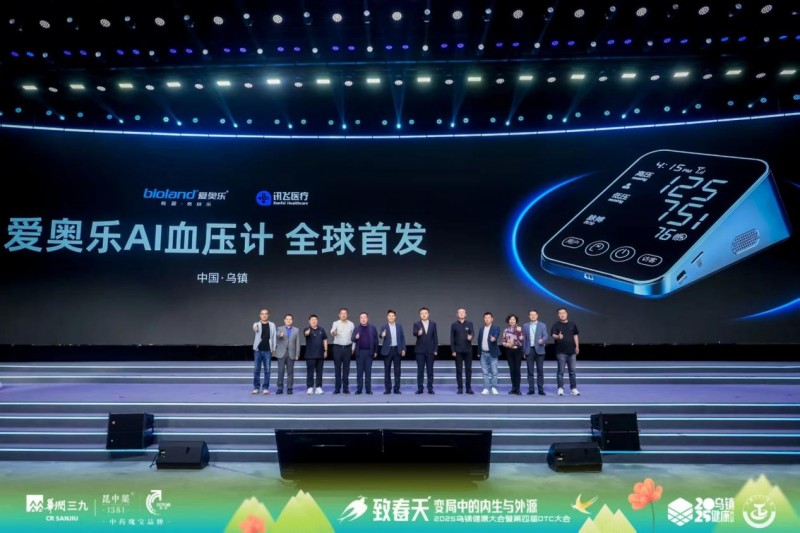 资讯
资讯 讯飞医疗与爱奥乐医疗联合首发AI血压计,开启高血压管理新时代
4月11日,在备受瞩目的乌镇健康大会上,讯飞医疗与爱奥乐医疗联合首发AI血压计,作为行业首款搭载医疗大模型的AI血压计,引领家用医疗器械从单一检测工具进化为全周期健康管理解...
2025-04-17 20:34
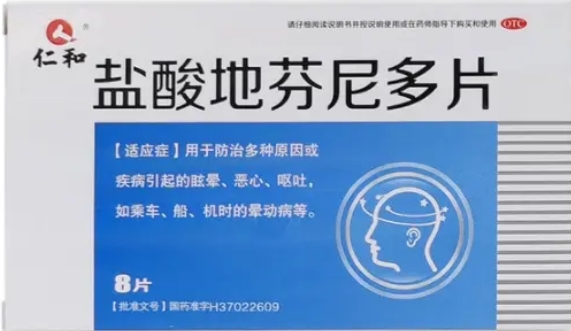 资讯
资讯 又一款常用药物被暂停采购资格
近日,上海阳光采购网发布通知,因未按要求调整药价,自2025年4月15日24时起暂停仁和堂药业有限公司盐酸地芬尼多片(25mg*12片 板 盒,铝塑)采购资格。
2025-04-17 15:29
 资讯
资讯 超16亿元,达仁堂“清仓”中美史克
日前,达仁堂发布公告称,公司拟分别向赫力昂(中国)、Haleon CH SARL(简称“赫力昂(英国))转让所持有的中美天津史克制药有限公司(简称“中美史克”)4 6%股权份额、7...
2025-04-17 15:08
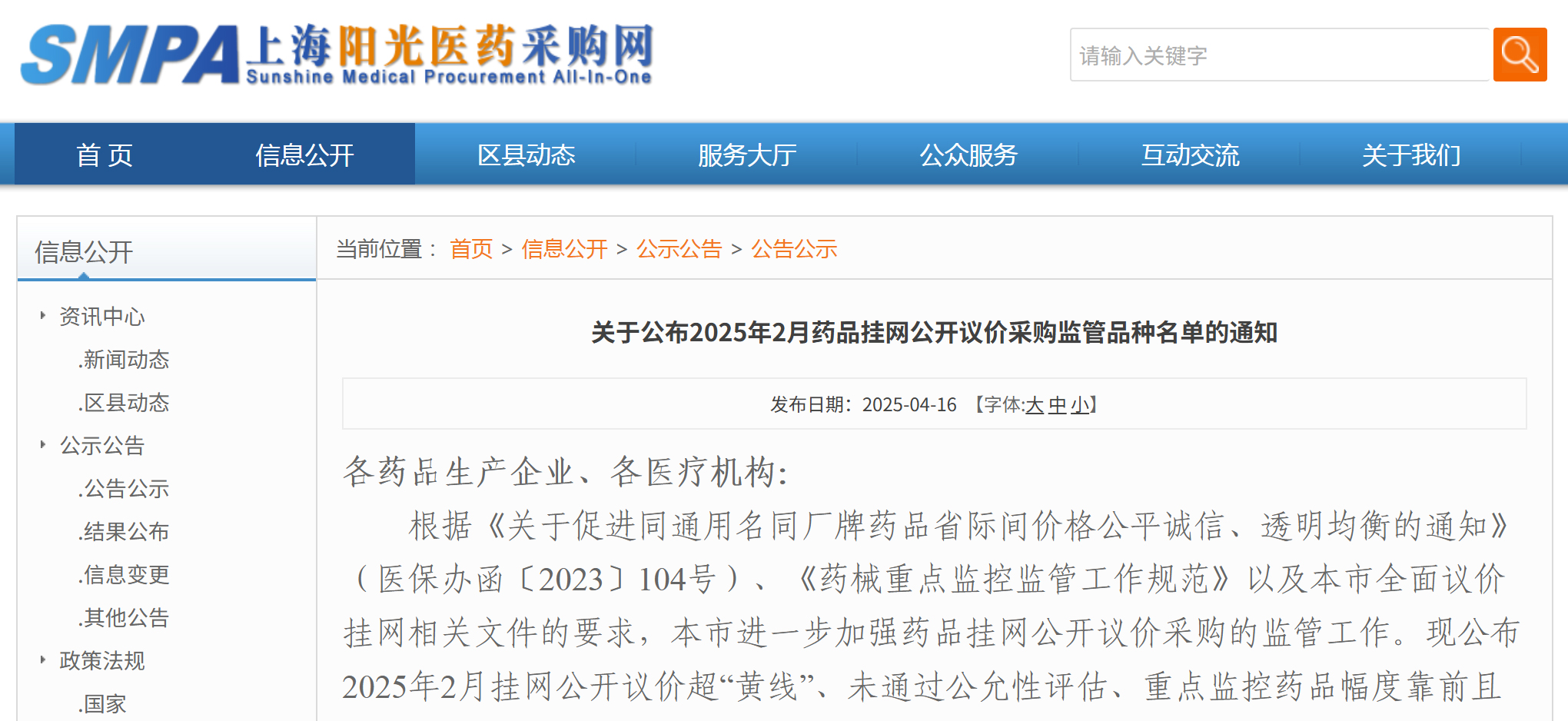 资讯
资讯 上海发布10款重点监控品种
根据上海此前发布的相关规则,医疗机构根据市场供需情况在阳光采购平台采购药品是,“红黄绿线”议价将实时提醒采购产品的价格是否存在问题,从而保证临床需求,并避免不合理调价。
2025-04-16 22:15
 资讯
资讯 马斯克称今年将首次在人体植入“盲视”设备,让失明者重见光明
4月初,马斯克在多个场合宣布,公司计划于今年底首次在人体内植入名为“Blindsight(盲视)”的脑机接口设备,目标是让完全失明者重见光明。
2025-04-16 14:28
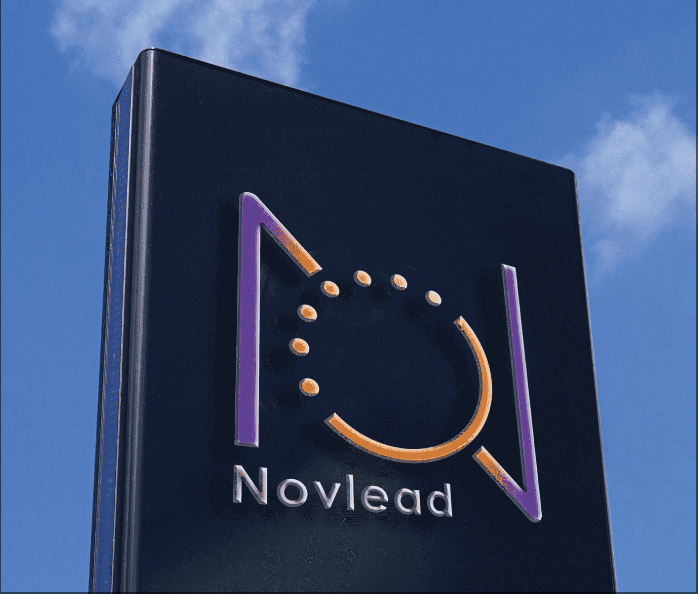 资讯
资讯 诺令生物完成数亿元人民币C轮融资,加速出海步伐和多元化产品布局
本轮融资将主要用于核心产品“便携式一氧化氮(NO)吸入治疗仪”的产能扩充、全球化推广,以及围绕NO缓释与发生技术的创新管线研发
2025-04-15 17:12
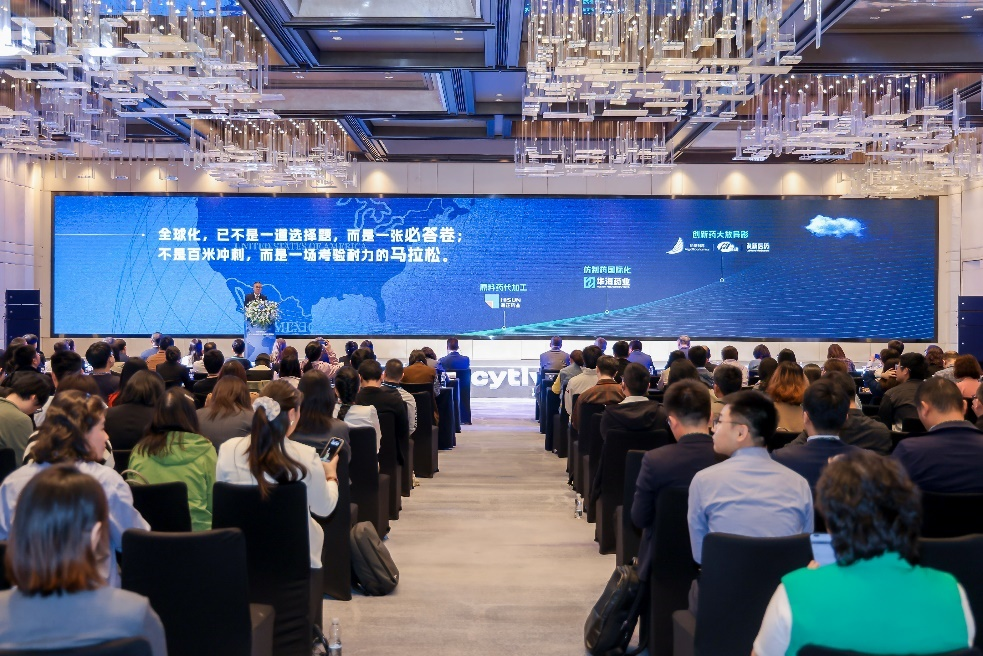 资讯
资讯 扬帆出海正当时:Cytiva 为中国生物药企绘制全球合规航海图
峰会聚焦法规解读、国际监管环境、中国生物药企业出海案例等关键议题,通过专家分享和深入解读,为中国生物药企提供全球化战略指导和合规支持;
2025-04-15 17:00
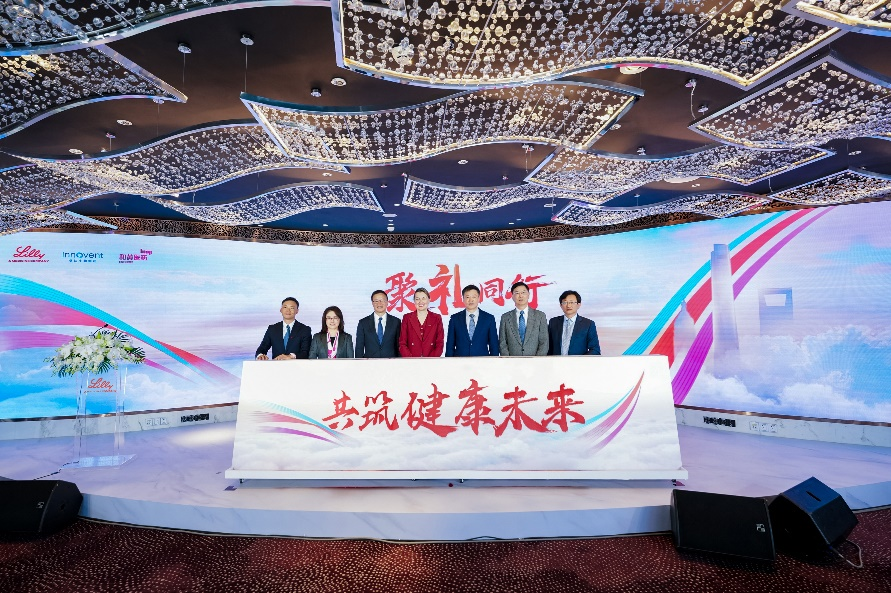 资讯
资讯 全国肿瘤防治宣传周:礼来携手信达生物、和黄医药加速赋能本土医药创新
礼来携手本土合作伙伴信达生物、和黄医药齐聚上海,共话本土医药创新发展,探索加速惠及中国肿瘤患者的新模式
2025-04-15 16:27
 资讯
资讯 ADC明星企业映恩生物港交所上市,开盘高开91.33%
上市首日,其股价开盘高开91 33%,随后涨幅迅速扩大至127 06%,午间收报214 80港元,市值突破178 66亿港元,成为近年来港股18A生物科技公司中最亮眼的IPO案例之一。
2025-04-15 13:19






